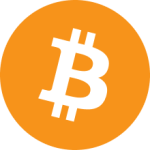The History and Evolution of Money
July 9, 2024
Money is more than the dollars, pounds, pesos, or yen we see today. To understand its essence, we need to look back to its origins and evolution.
Money vs. Currency
Money and currency are not the same. Money must be a medium of exchange, a unit of account, portable, durable, divisible, fungible, and, crucially, a store of value that maintains purchasing power over time. Currency, on the other hand, shares all these properties except being a store of value.
The Beginning: Barter System
Before money, there was barter, where people exchanged goods and services directly. This system, although effective for local trade, lacked a standard measure of value, leading to disputes. The Phoenicians and Babylonians expanded the barter system, trading goods like weapons, tea, spices, and even human skulls. Despite its usefulness, barter was inefficient and cumbersome.
The Egyptians and the Birth of Money
In ancient Egypt, gold and silver began to be used as mediums of exchange. These metals were valuable due to the labour required to extract them. However, their varying sizes and purities necessitated the use of scales. Over time, the weight of gold was standardised, making it a reliable medium of exchange, unit of account, portable, durable, divisible, and fungible. Most importantly, it maintained its purchasing power, serving as a store of value. Thus, money was born.
The Fall of Athens: Currency Debasement
Athens, a powerful civilisation, started to debase its currency to fund wars and public works. They mixed copper into gold coins, leading to inflation. As the value of their money decreased, people hoarded the old gold coins and spent the debased ones, exemplifying Gresham’s law (“bad money drives out good”). The increased money supply led to hyperinflation, contributing to the fall of the Athenian Empire. This pattern of debasement and collapse repeated in various civilisations.
Paper Money: Innovation and Risk
The Song Dynasty in China introduced paper money in the 11th century due to the impracticality of carrying heavy metal coins. However, the ease of printing paper money led to overproduction and inflation, as it lacked a store of value. Paper money without backing by gold or silver eventually failed.
Gold and Silver Backed Notes
Early U.S. money was gold and silver coinage. As carrying large amounts of coins became impractical, banks issued paper notes backed by stored gold. These notes acted as receipts for the actual gold or silver. This system maintained trust and value as the notes were redeemable for precious metals.
The Federal Reserve and Fiat Currency
The creation of the Federal Reserve in 1913 marked a significant shift. Initially, U.S. dollars were backed by gold. However, over the next 60 years, deficit spending and involvement in wars led to the abandonment of the gold standard. In 1971, President Nixon removed the dollar’s gold backing, leading to the current fiat currency system, where money is not backed by any physical commodity. This has led to currency debasement and loss of purchasing power.
The Modern Era: Fiat Currency and Inflation
Fiat currencies like dollars, pounds, pesos, or yen are printed without restriction, leading to inflation. These currencies do not maintain their purchasing power over time and fail to serve as a true store of value. This situation is reminiscent of ancient empires that collapsed due to similar practices.
The Evolution Continues: Bitcoin
Bitcoin represents a significant innovation in the history of money. Created in 2009 by the pseudonymous Satoshi Nakamoto, Bitcoin is a decentralised digital currency. It embodies the principles of good money: it is a medium of exchange, unit of account, portable, durable, divisible, fungible, and a store of value.
Understanding Bitcoin
Bitcoin is created through a process called “mining,” where computational power is used to solve complex mathematical problems, validating transactions and securing the network. This process requires economic energy (electricity and labour), storing value in the form of Bitcoin. Unlike fiat currency, Bitcoin’s supply is limited to 21 million, preventing debasement.
Bitcoin operates on a decentralised network, removing the need for a central authority like the Federal Reserve. Transactions are verified through a consensus mechanism called “proof of work,” ensuring security and trust in a trustless system. This is akin to the Byzantine Generals Problem, where consensus is needed among decentralised parties to avoid failure.
Bitcoin as Money
Bitcoin fulfills most characteristics of money. It is a medium of exchange, unit of account, portable, durable, divisible, and fungible. Its potential as a store of value is still debated, given its relatively short history compared to gold. However, its fixed supply and decentralised nature position it as a strong candidate for maintaining purchasing power over time.
Challenges and Prospects
Bitcoin faces challenges such as volatility and regulatory hurdles. However, its decentralised nature, fixed supply, and the trust built through mathematics and cryptography make it a revolutionary development in the evolution of money. It addresses the issues of fiat currency, offering a system resistant to debasement and government manipulation.
Conclusion
The history of money reflects human innovation and the constant search for a reliable store of value. From barter to gold, to paper money, and now digital currencies like Bitcoin, each evolution aims to solve the limitations of its predecessors. Bitcoin, with its unique characteristics and decentralised nature, represents a significant step forward, potentially addressing the issues inherent in fiat currency systems and offering a new paradigm for money.
Share this Article:
Crypto in your SMSF
Top Movers
Get Started Trading Crypto with Ainslie.
Join Thousands of satisfied customers who trust Ainslie for their cryptocurrency and bullion needs.





